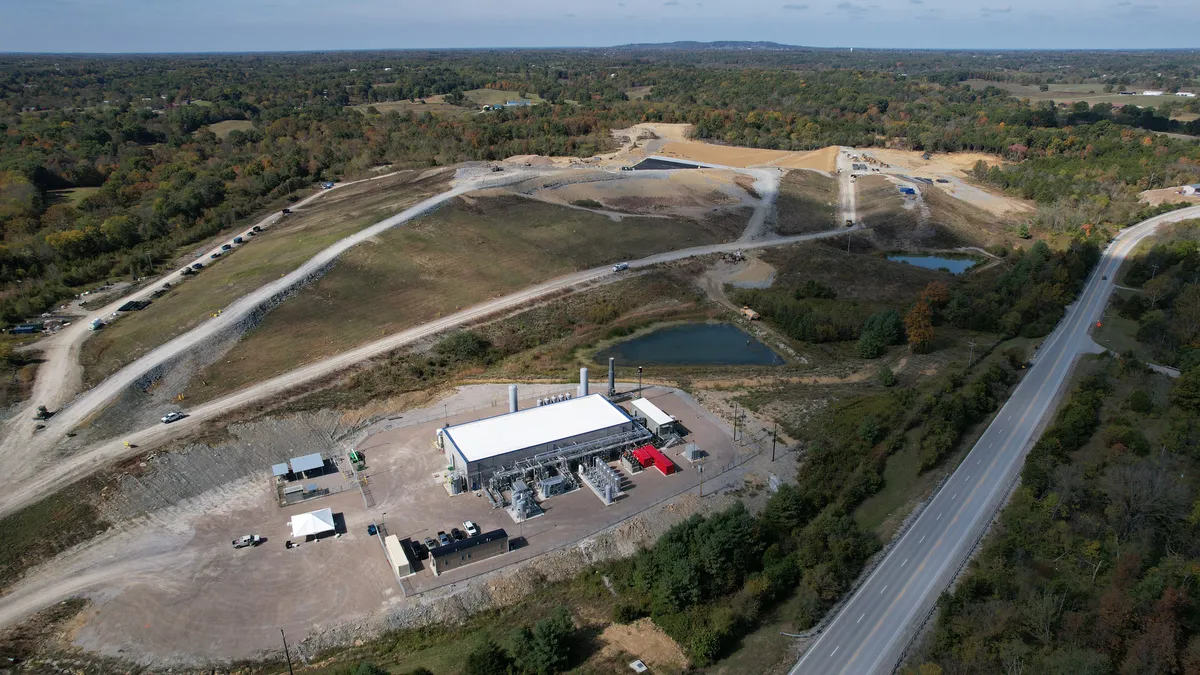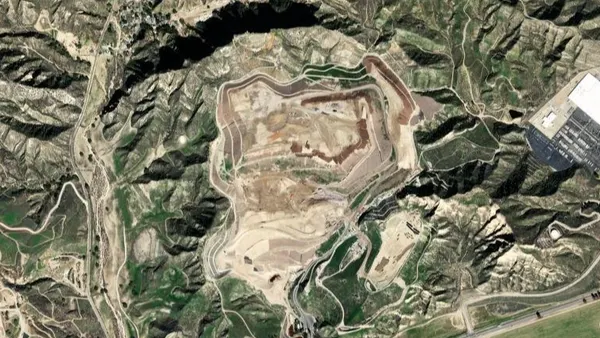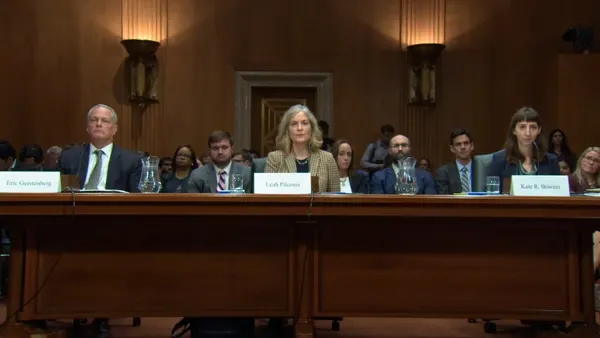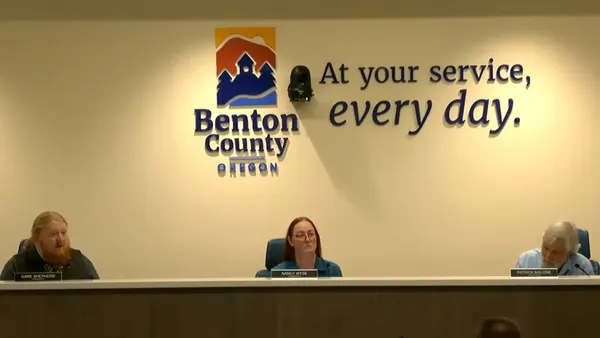Dive Brief:
- Landfills recorded their third consecutive year of declining methane emissions, reaching 119.8 million metric tons of carbon dioxide equivalent in 2022, according to the latest update to the U.S. EPA's annual Inventory of U.S. Greenhouse Gas Emissions and Sinks. Landfills remained the third largest source of methane, behind enteric fermentation from livestock and natural gas systems.
- Waste sector emissions have also declined steadily since 2019, dropping to 166.9 million metric tons of carbon dioxide equivalent in 2022. That total represents 2.6% of all of the country's emissions for the year.
- The waste category excludes emissions from municipal solid waste combustion facilities. Those facilities recorded 12.4 million metric tons of carbon dioxide emissions, down slightly from the prior year and down 4.2% from 1990 levels. The practice also produced 0.3 million metric tons of nitrous oxide, which the EPA reported has fallen 18% since 1990 due to declining volumes of MSW combusted.
Dive Insight:
Total gross U.S. greenhouse gas emissions were 6.34 billion metric tons of carbon dioxide equivalent in 2022. Total emissions in the U.S. peaked in 2007, but gross emissions rose 0.2% from 2021 to 2022, according to the report. That increase was largely driven by increasing economic activity coming out of the pandemic, which also fueled an increase last year, the EPA said. Overall emissions are still lower than pre-pandemic levels.
While landfills are the largest source of the waste sector's emissions, other practices had notable totals as well. Wastewater treatment plants emitted 20.8 million metric tons of CO2e, a slight increase year-over-year, and composting emitted 2.6 million metric tons of CO2e, which is essentially unchanged from the prior year. Anaerobic digestion contributed 13,380 metric tons of CO2e, less than 0.05% of the overall emissions from waste.
But the biggest reductions came from the landfill category, where methane generation fell by 4.5 million metric tons of CO2e between 2021 and 2022. Those emissions have fallen as landfill operators, particularly those that manage large sites, are enhancing their capture systems and in some cases upgrading them to produce renewable natural gas, a lucrative alternative fuel. Regulations continue to require landfills that reach a certain size to capture their methane emissions via flaring or other means.
The inventory relies on data submitted to the Greenhouse Gas Reporting Program by waste facility owners. The program instructs facility owners to calculate emissions using models checked by periodic sweeps of the facility. Joseph Goffman, assistant administrator for the EPA’s Office of Air and Radiation, touted the EPA’s “rigorous development and review process” for the report in a release on Thursday.
“EPA annually refines and strengthens our greenhouse gas inventory, producing a comprehensive tally of U.S. greenhouse gas emissions and sinks,” Goffman said. “Reflecting input from hundreds of experts across the government, academia, industry, and consulting, the GHG Inventory report is a model for high-quality and transparent national GHG accounting.”
But the practices used to measure landfill emissions have come under increasing scrutiny as new research suggests monitors are missing major methane plumes, including in some cases on the active face of a landfill or at the site of a faulty gas well. A study from Carbon Mapper used repeated flyovers of hundreds of landfills to identify methane leaks that often went undetected. Dan Cusworth, lead author on the paper, said prior to the release of EPA’s report that there’s a “misalignment” between how landfill operators measure emissions today and what their emissions actually are. That misalignment would carry over to the annual greenhouse gas inventory, and could imply an undercount in methane emissions.
Carbon Mapper’s study proposed that addressing landfill methane super emitters may create significant reductions beyond efforts to address super emitters in the oil and gas sector, due to the persistence and intensity of methane plumes coming from landfills. The EPA has also gotten more aggressive in addressing methane plumes in recent years, listing landfill emissions as an enforcement priority in a quadrennial document issued in August.















